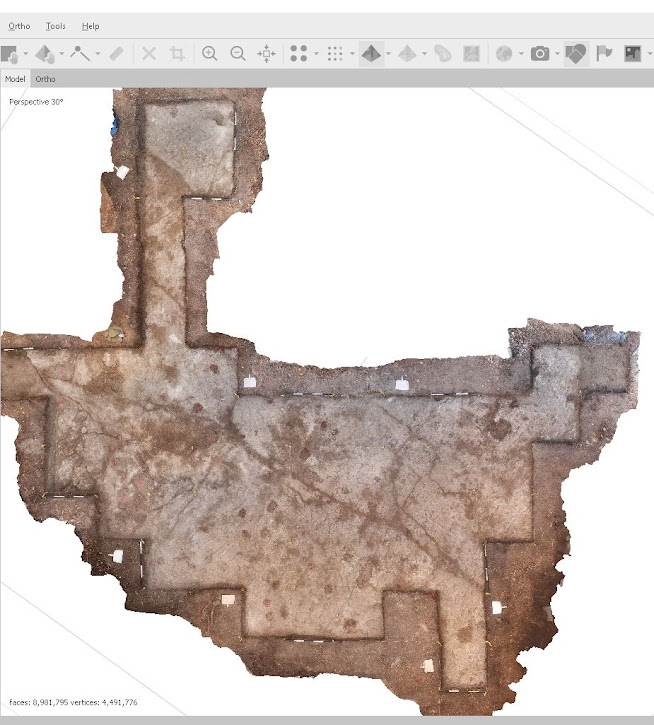Publicity, Post Holes, and Pivots
 A lot has happened in the past week, aside from Cup Match, which the wrong team won... We had a visit from Minister of Culture, Youth, and Sport Ernest Peets and Jamestown Rediscovery Director of Archaeology David Givens, gave a new Bermudian volunteer (Rachael) a project t-shirt (earned through three days of hard work, dodged various speeding boats running between our Paget Island home and our Smith's Island workplace, and cleared another twenty new units.
A lot has happened in the past week, aside from Cup Match, which the wrong team won... We had a visit from Minister of Culture, Youth, and Sport Ernest Peets and Jamestown Rediscovery Director of Archaeology David Givens, gave a new Bermudian volunteer (Rachael) a project t-shirt (earned through three days of hard work, dodged various speeding boats running between our Paget Island home and our Smith's Island workplace, and cleared another twenty new units.With only a few additional units to open, I completed a midseason photogrammetry 3D model of the site which really gives a sense of the enormous scale of this year's work - 56 square meters in Locus B and another six new units near the original stone ruin site (Locus A).
The 3D model shows in high detail numerous post holes cut into the bedrock, natural cracks that were probably created by ancient earthquakes, and - remarkably - tool marks on the bedrock surface that appear to be that of hoes and shovels, evidence of early settlers clearing the area and turning up the soil for planting. The farming scars are generally linear, but occur in different directions in different areas.
 |
| Detail of our midseason 3D model. Post hole features are marked with red flagging tape. Note the long regular cut into bedrock, possibly for the sill of a framed house. |
We also welcomed Royal Gazette reporter Jonathan Bell to the site. His Royal Gazette Article ran on Saturday amid Cup Match news and has been well received.
One slight correction to make because it is the source of constant confusion in early history conversations: 2 vs. 3 sailors left behind in Bermuda. When the Sea Venture castaways departed for Virginia, two sailors remained: convicted murderer Robert Waters and mutineer Christopher Carter. Both men suspected that when Sir Thomas Gates reached Virginia and his governor's commission came into full effect, he would promptly hang them - which is a very good reason to stay behind.
Sir George Somers returned to Bermuda in early autumn 1610 to fetch food for starving Virginia and died in November. Thereafter, his scoundrel of a nephew Matthew Somers abandoned his Virginia mission and sailed home to England with his uncle's body. When he departed, THREE sailors chose to remain in Bermuda - Christopher Carter, Edward Chard and EDWARD Waters. Robert Waters chose to go directly to England with Somers' ship and avoid a potential stopover in Virginia. It is unknown whether Robert and Edward Waters were related (“Waters” was probably a common surname chosen by sailors) but the swap of two sailors with the same surname remaining in Bermuda has often led to confusion. Thus only Christopher Carter maintained an unbroken residence in Bermuda from 1610 to 1612.
 |
| Archaeologist Thirst Trap |




.jpg)
Comments